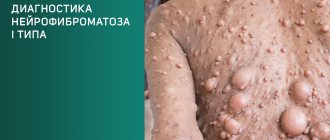Azithromycin: indications for use and contraindications
The manufacturer's instructions for the drug indicate the following pathologies for which the drug is sufficiently effective:
- inflammatory processes in the respiratory tract, with the formation of sinusitis, tonsillitis, pharyngitis, laryngitis, otitis media, pneumonia or exacerbation of chronic bronchitis;
- damage to the genitourinary tract without secondary complications - urethritis, cervicitis;
- infection of the dermis and soft tissues - infectious superficial pyoderma, erysipelas, dermatitis;
- initial borreliosis, scarlet fever, gastrointestinal pathologies associated with Helicobacter pylori.
The medication is not prescribed for complex diseases of the kidneys, liver, or allergic reactions to macrolides. The suspension is not used for babies weighing no more than 5 kg, and tablets and capsules - less than 45 kg.
Carefully
- myasthenia gravis;
- mild to moderate liver dysfunction;
- mild to moderate renal dysfunction (creatinine clearance more than 40 ml/min);
- in patients with the presence of proarrhythmogenic factors (especially in elderly patients): with congenital or acquired prolongation of the QT interval, in patients receiving therapy with antiarrhythmic drugs of classes IA (quinidine, procainamide), III (dofetilide, amiodarone and sotalol), cisapride, terfenadine, antipsychotics drugs (pimozide), antidepressants (citalopram), fluoroquinolones (moxifloxacin and levofloxacin), with disturbances in water and electrolyte balance, especially in the case of hypokalemia or hypomagnesemia, with clinically significant bradycardia, cardiac arrhythmia or severe heart failure;
- simultaneous use of terfenadine, warfarin, digoxin, cyclosporine.
Adverse reactions during therapy
Frequent clinical signs of the occurrence of a non-standard effect on treatment include:
- problems with visual acuity;
- attacks of vomiting with nausea;
- discomfort in the abdominal area;
- insufficient lymphocyte content;
- disturbance of acid-base balance in the blood.
Almost 1% of patients experienced the following:
- vaginal infections, oral candidiasis;
- vestibular dysfunction, constant drowsiness;
- convulsive syndrome, insufficient presence of leukocytes in the blood;
- cephalgia, loss of sensitivity of receptors responsible for taste and smell;
- constipation, digestive problems, active gas formation;
- gastroduodenitis, rapid loss of strength;
- vaginitis, dermatological rashes, obsessive itching.
Adverse reactions to Azithromycin in 0.1% of those undergoing treatment were:
- increased neutrophil content, decreased platelet count;
- anemia of hemolytic origin;
- increased activity, unreasonable excitement;
- anxiety, outbursts of aggression;
- asthenic syndrome, tingling sensation, ants moving across the skin;
- lethargy, neuroses, insomnia;
- discoloration of the skin in a yellow tint, symptoms of hepatitis;
- Quincke's edema, nettle fever, severe photosensitivity;
- exudative erythema – polymorphic, malignant course;
- anaphylactic shock, fungal infection.
Occasionally, an acceleration of the heart rate, ventricular arrhythmia, and pain in the chest space are recorded. Similar symptoms can be provoked by other macrolides. Antibiotics can cause a decrease in blood pressure and increase the QT interval.
Sometimes a decrease in hearing acuity, asthenic bulbar palsy, motor restlessness, liver dysfunction, hepatitis with necrotic complications are recorded. In most cases, adverse reactions occurred in patients taking Azithromycin in high dosages for a long period. Studies have shown that the resulting consequences are reversible.
Compound:
One tablet contains:
active substance
: azithromycin dihydrate in terms of azithromycin 250 mg/500 mg;
Excipients
: lactitol 300.0 mg / 600.0 mg, calcium phosphate dihydrate 59.8 mg / 119.6 mg, corn starch 24.0 mg / 48.0 mg, croscarmellose sodium 20.0 mg / 40.0 mg, magnesium stearate 6.0 mg / 12.0 mg, hypromellose 5.0 mg / 10.0 mg, sodium lauryl sulfate 1.2 mg / 2.4 mg, microcrystalline cellulose to obtain an uncoated tablet weighing 700 mg / 1400 mg;
Excipients of the shell:
hypromellose 9.49 mg/
18.98 mg, titanium dioxide 5.2 mg/10.4 mg, macrogol-4000 3.744 mg/7.488 mg, talc 1.12 mg/2.24 mg, povidone-K17 0.416 mg/0.832 mg, dye tropeolin O 0.030 mg / 0.060 mg to obtain a coated tablet weighing 720 mg / 1440 mg
special instructions
If you miss one dose, the missed dose should be taken as soon as possible, and subsequent doses should be taken at intervals of 24 hours.
The drug should be taken at least one hour before or two hours after taking anatacid medications.
The drug should be used with caution in patients with mild to moderate liver dysfunction due to the possibility of developing fulminant hepatitis and severe liver failure.
If there are symptoms of liver dysfunction, such as rapidly increasing asthenia, jaundice, darkening of urine, tendency to bleeding, hepatic encephalopathy, drug therapy should be stopped and a study of the functional state of the liver should be performed.
In case of mild to moderate renal dysfunction (creatinine clearance more than 40 ml/min), azithromycin therapy should be carried out with caution under monitoring the state of renal function.
As with the use of other antibacterial drugs, during therapy with azithromycin, patients should be regularly examined for the presence of non-susceptible microorganisms and signs of the development of superinfections, including fungal ones.
The drug should not be used for longer courses than indicated in the instructions, because The pharmacokinetic properties of azithromycin allow us to recommend a short and simple dosage regimen.
There is no data on a possible interaction between azithromycin and ergotamine and dihydroergotamine derivatives, but due to the development of ergotism with the simultaneous use of macrolides with ergotamine and dihydroergotamine derivatives, this combination is not recommended.
With long-term use of azithromycin, the development of pseudomembranous colitis caused by Clostridium difficile, both in the form of mild diarrhea and severe colitis, is possible. If antibiotic-associated diarrhea develops while taking the drug, as well as 2 months after the end of therapy, clostridial pseudomembranous colitis should be excluded.
When treated with macrolides, incl. azithromycin, prolongation of cardiac repolarization and QT interval was observed, increasing the risk of developing cardiac arrhythmias, incl. ari.
Caution should be exercised when using the drug in patients with the presence of proarrhythmogenic factors (especially in elderly patients): with congenital or acquired prolongation of the QT interval, in patients taking antiarrhythmic drugs of classes IA (quinidine, procainamide), III (dofetilide, amiodarone and sotalol), cisapride, terfenadine, antipsychotics (pimozide), antidepressants (citalopram), fluoroquinolones (moxifloxacin and levofloxacin), with fluid and electrolyte imbalance, especially in the case of hypokalemia or hypomagnesemia, with clinically significant bradycardia, cardiac arrhythmia or severe heart failure.
The use of azithromycin may provoke the development of myasthenic syndrome or cause an exacerbation of myasthenia gravis.
Interaction with other drugs.
Antacids
Antacids do not affect the bioavailability of azithromycin, but reduce the maximum blood concentration by 30%, so the drug should be taken at least one hour before or two hours after taking these drugs and eating.
Cetirizine
Concomitant use of azithromycin with cetirizine (20 mg) for 5 days in healthy volunteers did not lead to pharmacokinetic interaction or a significant change in the QT interval.
Didanosine (dideoxyinosine)
The simultaneous use of azithromycin (1200 mg/day) and didanosine (400 mg/day) in 6 HIV-infected patients did not reveal any changes in the pharmacokinetic indications of didanosine compared to the placebo group.
Digoxin (P-glycoprotein substrates)
Simultaneous use of macrolide antibiotics, incl. azithromycin, with P-glycoprotein substrates such as digoxin, leads to increased concentrations of P-glycoprotein substrate in the blood serum. Thus, with the simultaneous use of azithromycin and digoxin, it is necessary to take into account the possibility of increasing the concentration of digoxin in the blood serum.
Zidovudine
The simultaneous use of azithromycin (single dose of 1000 mg and multiple doses of 1200 or 600 mg) has a minor effect on pharmacokinetics, incl. renal excretion of zidovudine or its glucuronide metabolite. However, the use of azithromycin caused an increase in the concentration of phosphorylated zidovudine, a clinically active metabolite in peripheral blood mononuclear cells. The clinical significance of this fact is unclear.
Azithromycin interacts weakly with isoenzymes of the cytochrome P450 system. Azithromycin has not been shown to participate in pharmacokinetic interactions similar to erythromycin and other macrolides. Azithromycin is not an inhibitor or inducer of cytochrome P450 isoenzymes.
Ergot alkaloids
Given the theoretical possibility of ergotism, the simultaneous use of azithromycin with ergot alkaloid derivatives is not recommended.
Pharmacokinetic studies were conducted on the simultaneous use of azithromycin and drugs whose metabolism occurs with the participation of isoenzymes of the cytochrome P450 system.
Atorvastatin
Concomitant use of atorvastatin (10 mg daily) and azithromycin (500 mg daily) did not cause changes in atorvastatin plasma concentrations (based on HMG-CoA reductase inhibition assay). However, in the post-marketing period, isolated case reports of rhabdomyolysis have been received in patients receiving concomitant azithromycin and statins.
Carbamazepine
Pharmacokinetic studies involving healthy volunteers did not reveal a significant effect on the plasma concentrations of carbamazepine and its active metabolite in patients receiving concomitant azithromycin.
Cimetidine
Pharmacokinetic studies of the effect of a single dose of cimetidine on the pharmacokinetics of azithromycin did not reveal changes in the pharmacokinetics of azithromycin, provided that cimetidine was used 2 hours before azithromycin.
Indirect anticoagulants (coumarin derivatives)
In pharmacokinetic studies, azithromycin did not affect the anticoagulant effect of a single 15 mg dose of warfarin administered to healthy volunteers. Potentiation of the anticoagulant effect has been reported after simultaneous use of azithromycin and indirect anticoagulants (coumarin derivatives). Although a causal relationship has not been established, the need for frequent monitoring of PT should be considered when using azithromycin in patients receiving indirect oral anticoagulants (coumarin derivatives).
Cyclosporine
In a pharmacokinetic study involving healthy volunteers who took azithromycin (500 mg/day once) orally for 3 days, followed by cyclosporine (10 mg/kg/day once), a significant increase in plasma Cmax and AUC0-5 of cyclosporine was detected. . Caution is advised when using these drugs together. If simultaneous use of these drugs is necessary, it is necessary to monitor the concentration of cyclosporine in the blood plasma and adjust the dose accordingly.
Efavirenz
Concomitant use of azithromycin (600 mg/day once) and efavirenz (400 mg/day) daily for 7 days did not cause any clinically significant pharmacokinetic interaction.
Fluconazole
Concomitant use of azithromycin (1200 mg once) did not change the pharmacokinetics of fluconazole (800 mg once). The total exposure and T1/2 of azithromycin did not change with simultaneous use of fluconazole, however, a decrease in Cmax of azithromycin was observed (by 18%), which was not clinically significant.
Indinavir
The simultaneous use of azithromycin (1200 mg once) did not have a statistically significant effect on the pharmacokinetics of indinavir (800 mg 3 times a day for 5 days).
Methylprednisolone
Azithromycin does not have a significant effect on the pharmacokinetics of methylprednisolone.
Nelfinavir
The simultaneous use of azithromycin (1200 mg) and nelfinavir (750 mg 3 times a day) causes an increase in the Css of azithromycin in the blood serum. No clinically significant side effects were observed, and no dose adjustment of azithromycin is required when used concomitantly with nelfinavir.
Rifabutin
The simultaneous use of azithromycin and rifabutin does not affect the concentration of each drug in the blood serum. Neutropenia has sometimes been observed with simultaneous use of azithromycin and rifabutin. Although neutropenia has been associated with the use of rifabutin, a causal relationship between the use of the combination of azithromycin and rifabutin and neutropenia has not been established.
Sildenafil
When used in healthy volunteers, there was no evidence of the effect of azithromycin (500 mg/day daily for 3 days) on the AUC and Cmax of sildenafil or its main circulating metabolite.
Terfenadine
Pharmacokinetic studies have not provided evidence of an interaction between azithromycin and terfenadine. There have been isolated cases reported where the possibility of such an interaction could not be completely excluded, but there was no concrete evidence that such an interaction occurred. It has been found that the simultaneous use of terfenadine and macrolides can cause arrhythmia and prolongation of the QT interval.
Theophylline
No interaction has been detected between azithromycin and theophylline.
Triazolam/midazolam
Significant changes in pharmacokinetic parameters with simultaneous use of azithromycin with triazolam or midazolam in therapeutic doses were not detected.
Trimethoprim/sulfamethoxazole
Concomitant use of trimethoprim/sulfamethoxazole with azithromycin did not show a significant effect on Cmax, total exposure or renal excretion of trimethoprim or sulfamethoxazole. Azithromycin serum concentrations were consistent with those found in other studies.








